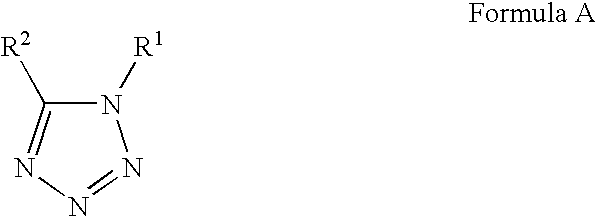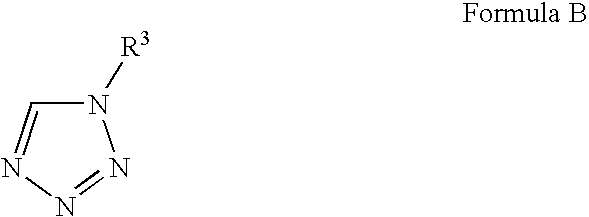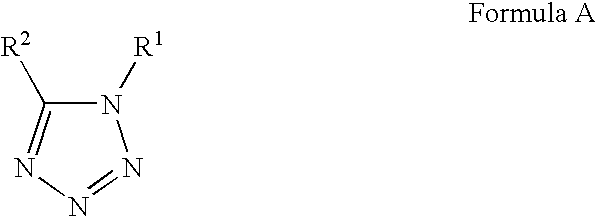Metal-polishing liquid and polishing method
a metal-polishing liquid and polishing technology, applied in the direction of lapping machines, manufacturing tools, other chemical processes, etc., can solve the problems of large problem with respect to planarity, difficult to obtain sufficient polishing speed, complicated cleaning process,
- Summary
- Abstract
- Description
- Claims
- Application Information
AI Technical Summary
Benefits of technology
Problems solved by technology
Method used
Image
Examples
example 1
—Metal-Polishing Liquid—
[0193](a) Compound represented by Formula A [a-1] (Amount shown in Table 2);[0194](b) Compound represented by Formula B [b-1] (Amount shown in Table 3);[0195](c) Abrasive grains [PL-3, trade name produced by FUSO Chemical Co., LTD.](Cocoon-shaped colloidal silica particles having a primary particle diameter of 35 nm) (0.5% by mass);
(d) Oxidizing agent (30% hydrogen peroxide)20 ml / LGlycine10 g / LpH (adjusted to a pH of 7 with ammonia water).
examples 2 to 9
[0196]Metal-polishing liquids 2 to 9 were prepared in a similar manner as in Example 1 except that the compounds (a) and (b) used in Example 1 were changed to the components shown in Table 1. The metal-polishing liquid according to Example 8 was prepared by further employing 10 ppm of the anionic surfactant dodecylbenzenesulfonic acid (shown as “DBS” in Table 1) as component (e). Further, the metal-polishing liquid according to Example 9 was prepared by further employing 10 ppm of a condensation product of sodium naphthalenesulfonate and formalin (shown as “NSF” in Table 1), which is an anionic polymer, as component (e).
PUM
| Property | Measurement | Unit |
|---|---|---|
| pressure | aaaaa | aaaaa |
| diameter | aaaaa | aaaaa |
| diameter | aaaaa | aaaaa |
Abstract
Description
Claims
Application Information
 Login to view more
Login to view more - R&D Engineer
- R&D Manager
- IP Professional
- Industry Leading Data Capabilities
- Powerful AI technology
- Patent DNA Extraction
Browse by: Latest US Patents, China's latest patents, Technical Efficacy Thesaurus, Application Domain, Technology Topic.
© 2024 PatSnap. All rights reserved.Legal|Privacy policy|Modern Slavery Act Transparency Statement|Sitemap



